
How to Use 2" Water Flow Sensor GR-216: Examples, Pinouts, and Specs
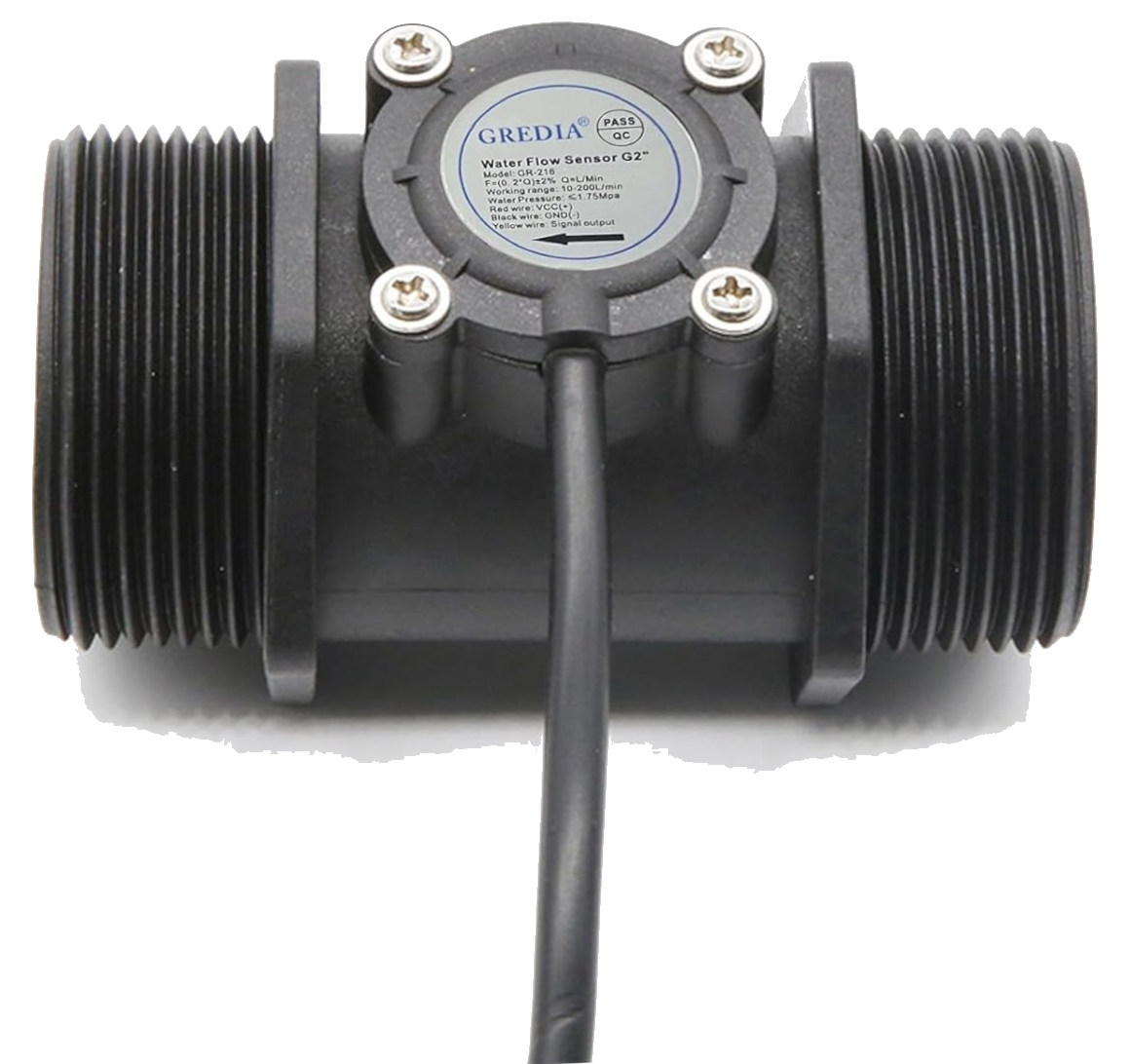
 Design with 2" Water Flow Sensor GR-216 in Cirkit Designer
Design with 2" Water Flow Sensor GR-216 in Cirkit DesignerIntroduction
The 2" Water Flow Sensor GR-216, manufactured by GREDIA, is a high-precision sensor designed to measure the flow rate of water in a pipe. It is commonly used in applications such as irrigation systems, aquariums, water management systems, and industrial fluid monitoring. The sensor provides real-time data on water flow, enabling efficient monitoring and control of water usage.
This sensor is equipped with a Hall effect sensor that outputs a pulse signal proportional to the flow rate, making it easy to interface with microcontrollers like Arduino, Raspberry Pi, or other control systems.
Explore Projects Built with 2" Water Flow Sensor GR-216
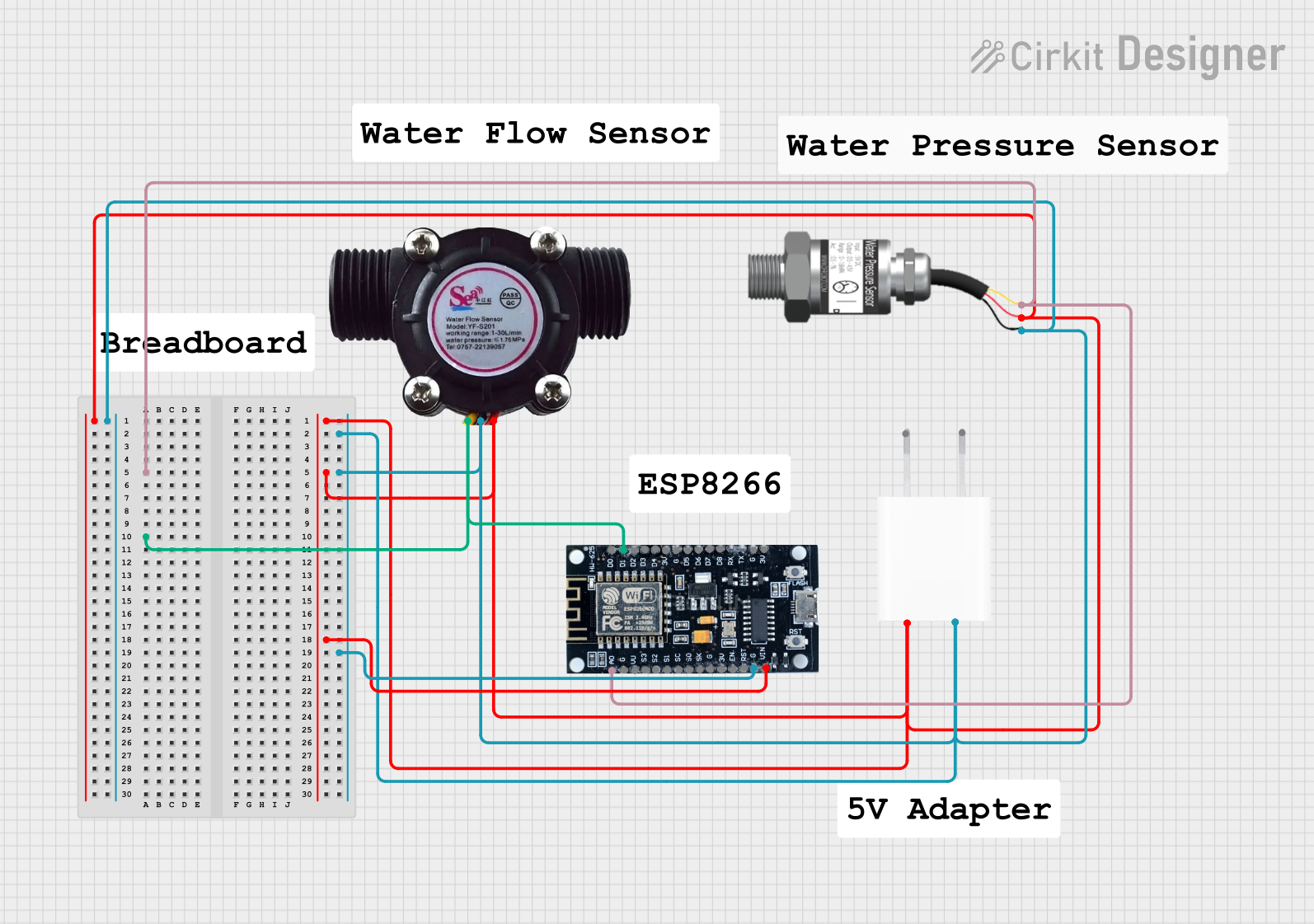
 Open Project in Cirkit Designer
Open Project in Cirkit Designer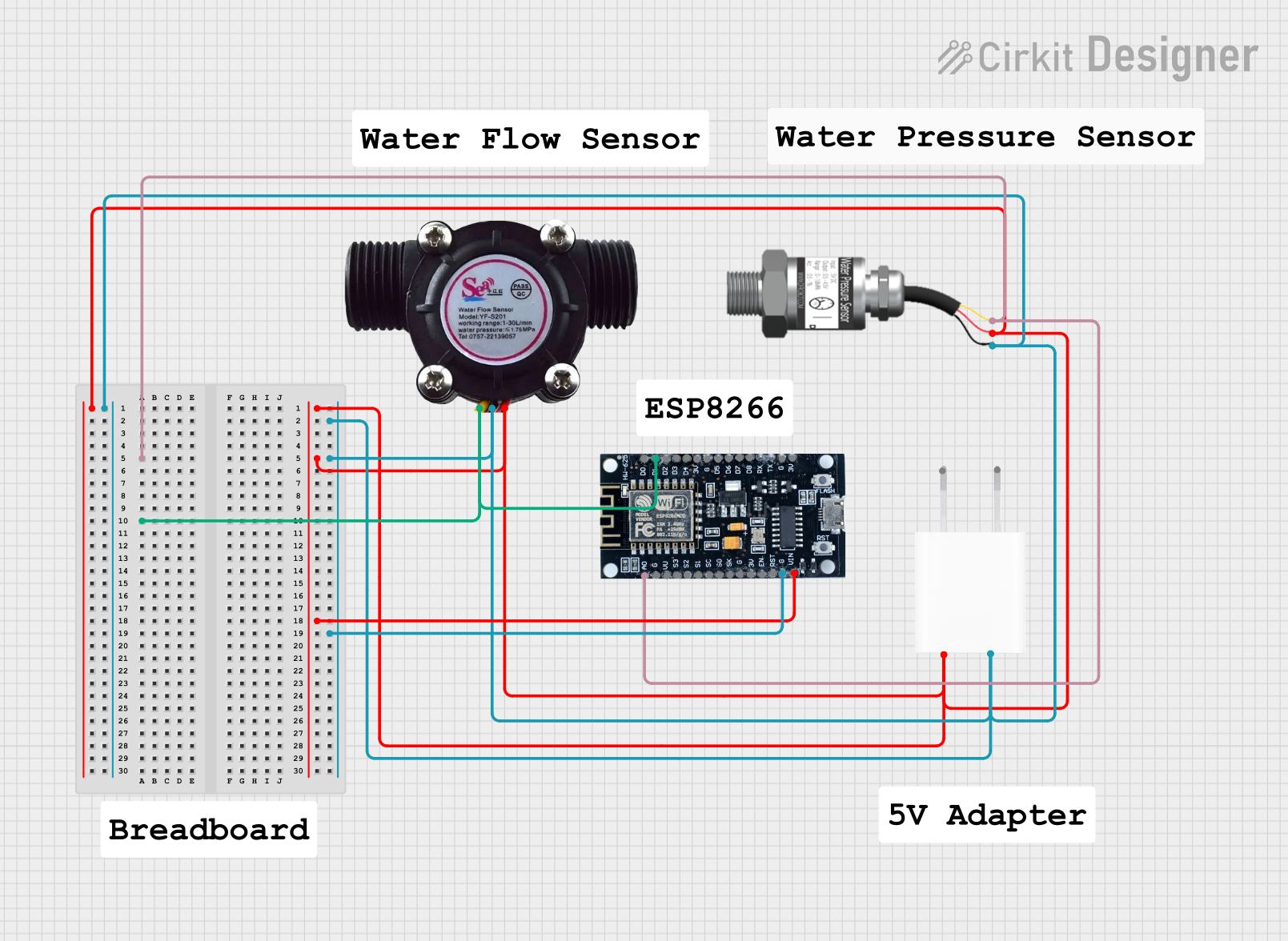
 Open Project in Cirkit Designer
Open Project in Cirkit Designer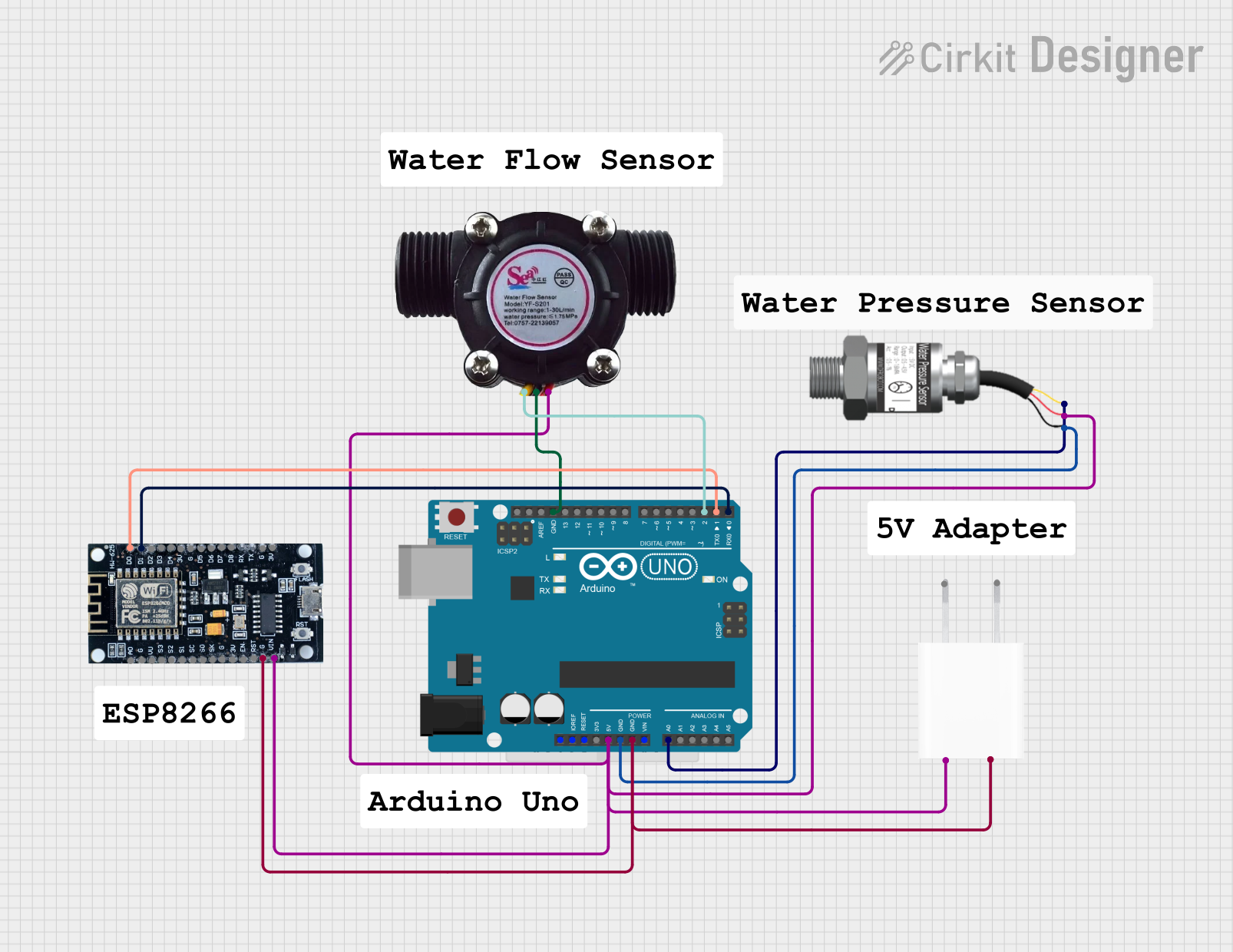
 Open Project in Cirkit Designer
Open Project in Cirkit Designer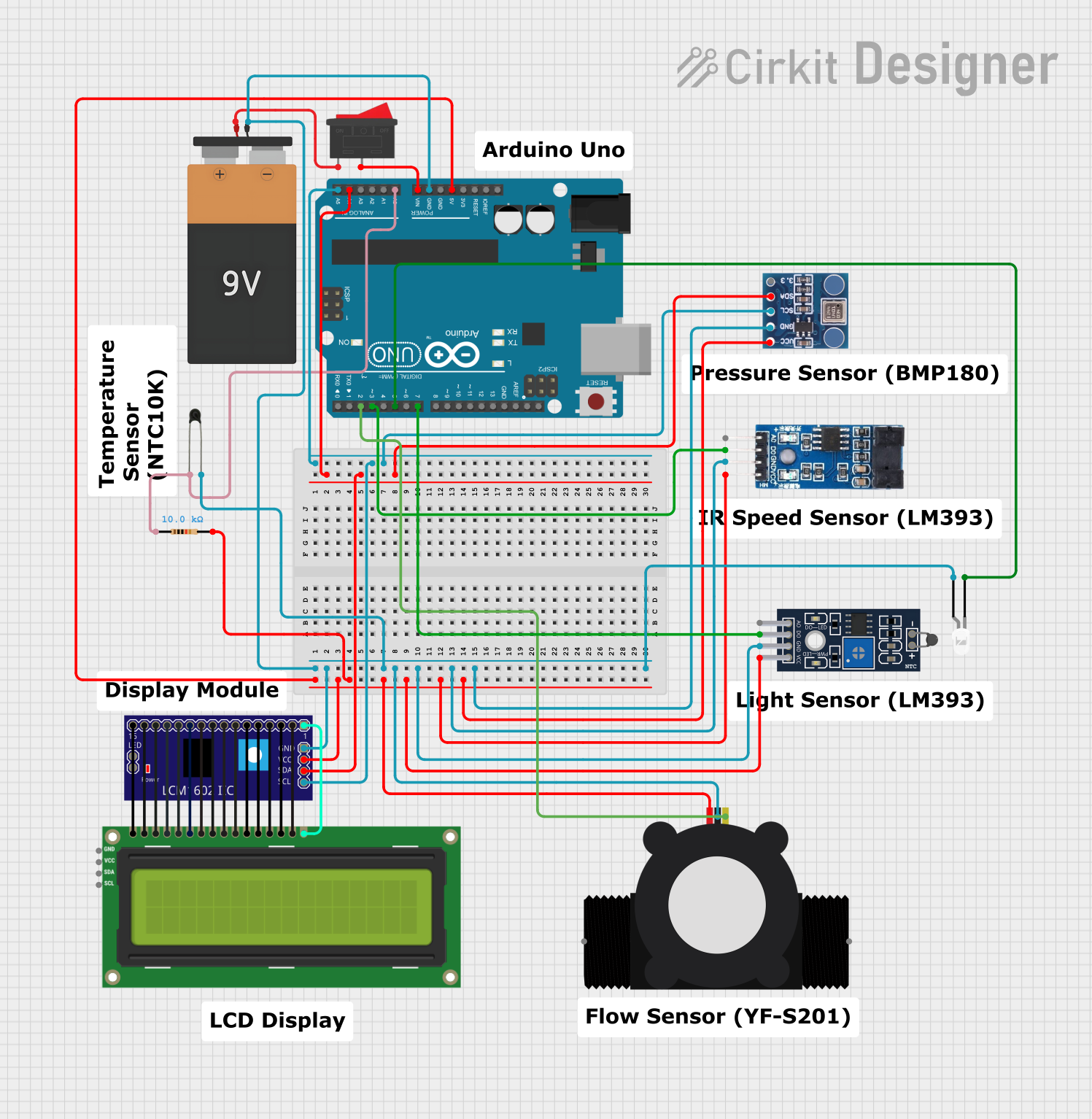
 Open Project in Cirkit Designer
Open Project in Cirkit DesignerExplore Projects Built with 2" Water Flow Sensor GR-216

 Open Project in Cirkit Designer
Open Project in Cirkit Designer
 Open Project in Cirkit Designer
Open Project in Cirkit Designer
 Open Project in Cirkit Designer
Open Project in Cirkit Designer
 Open Project in Cirkit Designer
Open Project in Cirkit DesignerTechnical Specifications
Below are the key technical details of the GR-216 Water Flow Sensor:
| Parameter | Specification |
|---|---|
| Manufacturer | GREDIA |
| Part Number | GR-216 |
| Pipe Diameter | 2 inches (50.8 mm) |
| Flow Rate Range | 10 - 200 L/min |
| Operating Voltage | 5V - 24V DC |
| Output Signal | Pulse signal (Hall effect) |
| Pulse Frequency | 4.8 pulses per liter (approx.) |
| Maximum Working Pressure | ≤ 1.75 MPa |
| Operating Temperature | -25°C to 80°C |
| Material | Nylon (food-grade, durable) |
| Accuracy | ±2% |
Pin Configuration and Descriptions
The GR-216 sensor has three wires for connection:
| Wire Color | Function | Description |
|---|---|---|
| Red | VCC (Power) | Connect to a DC power supply (5V - 24V). |
| Black | GND (Ground) | Connect to the ground of the power supply. |
| Yellow | Signal (Pulse Out) | Outputs a pulse signal proportional to the flow. |
Usage Instructions
How to Use the GR-216 in a Circuit
- Power the Sensor: Connect the red wire to a DC power source (5V - 24V) and the black wire to ground.
- Connect the Signal Wire: Attach the yellow wire to a digital input pin on your microcontroller. Use a pull-up resistor (e.g., 10kΩ) if required.
- Read the Pulse Signal: The sensor outputs a pulse signal where the frequency is proportional to the flow rate. Use your microcontroller to count the pulses and calculate the flow rate.
Example Arduino UNO Code
Below is an example code to interface the GR-216 with an Arduino UNO:
// GR-216 Water Flow Sensor Example Code
// This code reads the pulse signal from the sensor and calculates the flow rate.
const int sensorPin = 2; // Digital pin connected to the sensor's yellow wire
volatile int pulseCount = 0; // Variable to store pulse count
float flowRate; // Variable to store flow rate in L/min
unsigned long lastTime = 0; // Time of the last calculation
const unsigned long interval = 1000; // Interval for flow rate calculation (1 second)
// Interrupt service routine to count pulses
void pulseCounter() {
pulseCount++;
}
void setup() {
pinMode(sensorPin, INPUT_PULLUP); // Set sensor pin as input with pull-up resistor
attachInterrupt(digitalPinToInterrupt(sensorPin), pulseCounter, RISING);
Serial.begin(9600); // Initialize serial communication
}
void loop() {
unsigned long currentTime = millis();
// Calculate flow rate every second
if (currentTime - lastTime >= interval) {
detachInterrupt(digitalPinToInterrupt(sensorPin)); // Disable interrupt temporarily
// Calculate flow rate in L/min
flowRate = (pulseCount / 4.8); // 4.8 pulses per liter
pulseCount = 0; // Reset pulse count
Serial.print("Flow Rate: ");
Serial.print(flowRate);
Serial.println(" L/min");
lastTime = currentTime; // Update last calculation time
attachInterrupt(digitalPinToInterrupt(sensorPin), pulseCounter, RISING); // Re-enable interrupt
}
}
Important Considerations and Best Practices
- Power Supply: Ensure the sensor is powered within the specified voltage range (5V - 24V DC).
- Water Quality: Use clean water to prevent clogging or damage to the sensor.
- Orientation: Install the sensor in the correct orientation (indicated by the arrow on the body) to ensure accurate readings.
- Pressure Limits: Do not exceed the maximum working pressure of 1.75 MPa to avoid damage.
- Debouncing: Use software debouncing or filtering to handle noise in the pulse signal.
Troubleshooting and FAQs
Common Issues and Solutions
No Output Signal:
- Check the power supply voltage and connections.
- Ensure the sensor is installed in the correct orientation.
- Verify that the water flow rate is within the specified range (10 - 200 L/min).
Inaccurate Readings:
- Check for debris or blockages in the sensor.
- Ensure the sensor is installed in a straight section of the pipe, away from bends or turbulence.
- Calibrate the sensor if necessary by comparing it with a known flow rate.
Intermittent Signal:
- Verify the connections, especially the signal wire.
- Use a pull-up resistor on the signal line if the signal is weak or noisy.
FAQs
Q: Can the GR-216 be used with liquids other than water?
A: The GR-216 is designed for water. Using it with other liquids may affect accuracy or damage the sensor.
Q: How do I calculate the total volume of water passed?
A: Multiply the total pulse count by the volume per pulse (1 pulse = 1/4.8 liters).
Q: Can I use the GR-216 with a 3.3V microcontroller?
A: Yes, but ensure the signal voltage is compatible. You may need a level shifter if the signal exceeds 3.3V.
Q: What is the lifespan of the GR-216 sensor?
A: The sensor is durable and designed for long-term use, but lifespan depends on water quality and operating conditions. Regular maintenance is recommended.
By following this documentation, you can effectively integrate the GR-216 Water Flow Sensor into your projects for accurate and reliable water flow measurement.